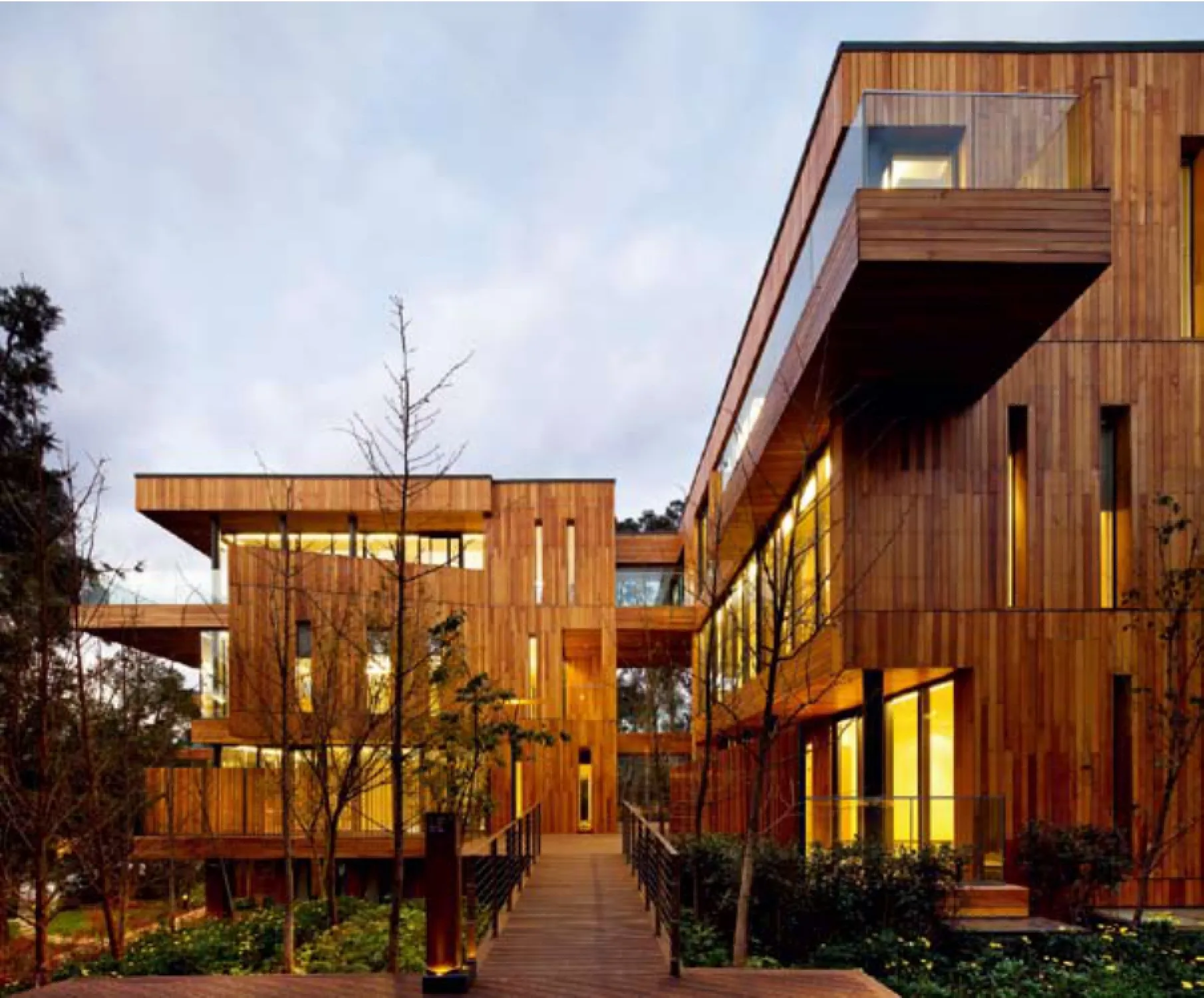隐舍,世博生态城,昆明,云南,中国
主持建筑师:郝琳
Principal Architect: HAO Lin
隐舍,世博生态城,昆明,云南,中国
Innhouse , Expo Eco-town, Kunming, Yunnan, China, 2011
主持建筑师:郝琳
Principal Architect: HAO Lin

这处隐于林间的小型生态旅舍仅为旅者提供17间体验式客房。4座高低错落的L形建筑以村落的形式聚集,形成通过曲折步道联接并面向山谷的系列半开放庭院。旅舍大量采用竹木等自然环保素材表现朴实简约的形态。建筑落实低碳环保策略,协助拓展当地日益兴起的生态旅游的视野。建筑依照当地的气候特点,通过模拟和被动环境调节实现自然通风和采光。项目的可持续发展特点包括:分水岭策略、太阳能热水技术、高保温外墙体、双层LOW-E窗、屋顶种植、环保建材、透水性地面、LED灯、生态多样性和本地植被景观、新风热回收系统、高效能热泵、雨水回收用于景观、中水处理、绿色智能化管理。隐舍是建筑师在“创意绿色”概念下在中国完成的系列作品之一。
This eco guesthouse is conceived as a village for travelers, with seventeen guest suites in a cluster of four L-shaped structures linked by natural trails and courtyards at varying levels. The timberclad building with reconstituted bamboo decking is a simple arrangement of forms largely devoid of decoration amongst a densely landscaped and treed site. Innhouse aims to respect and restore the original site's valley ecosystem with less than 18% site coverage. The experience is enhanced with a range of innovative technological measures, available solutions appropriate to the region. Primary sustainable technologies include: passive design to maximize day lighting and natural ventilation, site watershed conservation, solar thermal hot water, rainwater recycling and grey water reuse, a highly insulated envelope, reconstituted bamboo with low embodied energy, habitat preservation and intelligent & green building control. The project is the latest in a series of projects by the Architect aiming at raising aspirations for environmentally sensitive design and establishing a benchmark for the future.
项目信息/Credits and Data
设计团队/Design Team: Peaker Chu, Judy Lee, Connie Chiu建筑面积/Floor Area: 4239m2
摄影/Photos: Kerun Ip

3 立面/Elevation

4 总平面/Site plan

